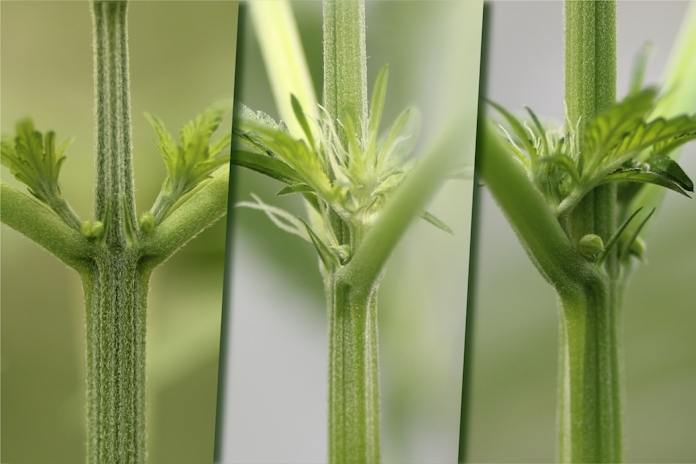
Amsterdam Genetics
Early Signs of a Hermie Weed Plant (Pictures Included)
Do you have a hermie on your hands? Read our guide to find out.
Cannabis cultivation is both an art and a skill. With time and experience, you’ll start to notice unique things about male plants, female plants, and the potentially disastrous outcome of growing them together.
While most cannabis growers prefer producing female plants, there’s an odd chance of finding hermaphroditic flowers sprouting in the garden. And that’s exactly what it sounds like—female or male cannabis plants that grow both sex organs on the same plant.
Catching these “hermie” weed plants early is rule number one for protecting your harvest from the risk of pollination.
What Is A Hermaphrodite Cannabis Plant?

Esteban Lopez / Unsplash
Hermaphroditic cannabis plants are mixed-sex plants that produce both male and female sex organs. They’re pretty rare, since most dioecious plants usually express male or female genetic composition, not both.
On the one hand, female cannabis plants produce the resin-rich buds we know and love. However, male plants produce pollen, which fertilizes female plants and causes them to grow seeds instead of usable flower.
When a plant becomes hermaphroditic, it can self-pollinate—and that’s where problems start:
- You’ll end up with seedy, lower-quality buds
- The plant can also pollinate nearby females, ruining an entire crop intended for sinsemilla (seedless) production
Causes Of Hermie Plants

Crystalweed / Unsplash
So, what causes a plant to turn hermie? In genetically female plants, it usually comes down to two things: genetic predisposition and environmental stress, with stress being the most common culprit.
Genetic predisposition: Some cannabis strains and plant genetics are more susceptible to growing into a hermaphrodite, like landrace varieties and certain hybrids.
Environmental stress: This is the leading cause of accidental hermaphrodite plants. When a plant feels it’s in survival mode, it may develop both male and female traits to reproduce at all costs. Common stressors include:
- Light leaks or irregular light cycles during flowering
- Temperature extremes (either too hot or too cold)
- Root damage or container issues
- Nutrient deficiencies or toxicities
- Water stress (drought or overwatering)
- Physical damage to branches or stems
Chemical stress: Certain sprays—like pesticides or growth regulators—can also confuse the plant’s hormonal balance and trigger hermaphroditism.
Extended flowering: Keeping plants in the flowering stage longer than their optimal harvest window runs the risk of hermie development, as the plant attempts one last effort to reproduce.
Types of Hermies

Shutterstock
When looking for hermaphrodite plants, they’ll typically come about in one of two ways:
True Hermaphrodites: These plants have male pollen sacs and female flowers in separate locations on the same plant. The male structures look the same as those on regular male plants—round pollen sacs clustered like grapes.
“Bananas” or Anthers: Here’s where things get dangerous. And sadly, more common. Some plants that develop elongated, yellow structures like bananas from female buds are actually exposed male anthers (sometimes called “banners”). Unlike pollen sacs, these banners don’t need to open to release pollen—they can do it immediately, often going unnoticed until it’s too late.
Why Would Growers Want A Hermie Weed Plant?
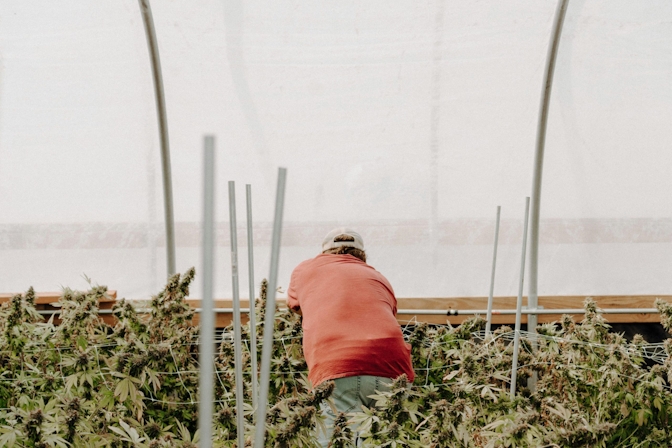
Steven Foster / Unsplash
Knowing all of this, you might think, why on earth would growers voluntarily choose to grow hermaphroditic plants? Well, in most cases, they don’t. Unless we’re talking about breeding:
Creating feminized seeds: Breeders sometimes intentionally induce hermaphroditism in female plants and purposely stress them out. This lets them create pollen from plants that would often just grow female flowers. This pollen is used to pollinate other female plants and produce feminized seeds. With this method, you get a pretty sweet success rate of about 99%.
Maintaining rare genetics: If a particular plant with great traits is at risk of going extinct, inducing hermaphroditism is a solid way to create seeds and preserve those genetics.
In most cases, the typical grower isn’t interested in breeding and is solely focused on producing seedless cannabis buds (sinsemilla). In that case, hermie plants are definitely unwanted. They can pollinate your entire grow room and turn premium flowers into seedy, low-quality buds.
7 Early Signs of Hermie Plants (With Pictures)
Catching hermaphroditic cannabis early can make or break your harvest. Here are the key warning signs to watch for:
1. Pollen Sacs Forming at Node Intersections

Royal Queen Seeds
In female plants that develop hermie tendencies, look for small, round pollen sacs forming where branches meet the main stem (nodes). Female flowers produce pistils (white hairs), but male structures are smooth and rounded without any hairs.
2. Banana-Shaped Growths Within Buds

Alchimia Web
Keep an eye out for bananas. They’re small, yellow, banana-shaped structures coming from female buds. As previously mentioned, these ticking time bombs can release pollen immediately. Unlike pollen sacs that need to open first, these bananas are basically just exposed male stamens that can pollinate your crop without warning.
3. Mixed Sex Buds
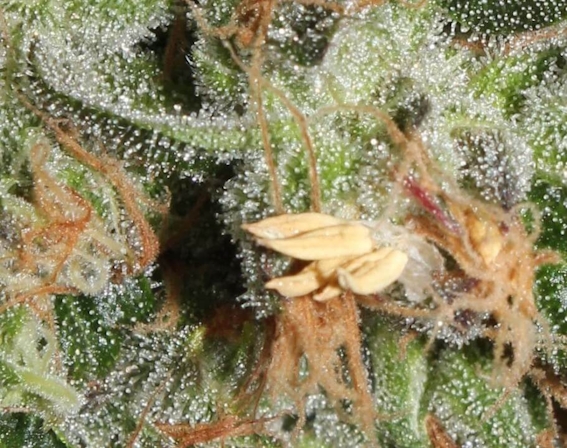
Alchimia Web
Take a close look at your flowering plants. Do you see sites where pistils (white hairs) and pollen structures are side-by-side? If you see this mixed, it’s a clear sign that you’re dealing with a hermie.
4. Unusual Growth Patterns Post-Stress
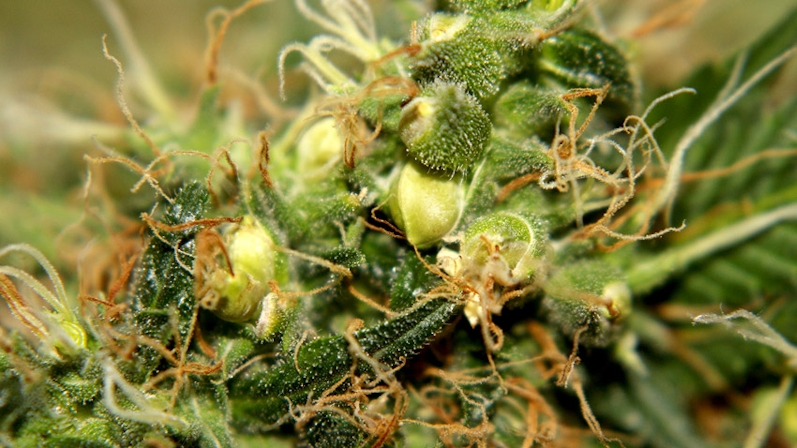
Advanced Nutrients
After experiencing stressors like light and temperature changes, watch for unusual growth at bud sites. New growth that looks different from the surrounding female flowers could be an early sign of hermaphroditic development. Watch for anything unusual, like small sacs or odd-looking structures forming alongside normal buds.
5. Clusters of Sacs Without Pistils

Medicinal Genomics
Female flowering sites have many white pistils, but hermaphroditic growth has clusters of small, round structures without any pistil development, like regular male flowers. These are pollen sacs preparing to release pollen grains.
6. Swollen Calyx With No Pistil

Alchiamia Web
Female calyxes normally have pistils poking out of them. If you see swollen, teardrop-shaped structures without pistils, these might be male structures rather than seed development.
7. Seeds Forming in Early Flowering

Amsterdam Genetics
Finding seeds developing in buds during early or mid-flowering is a clear sign that pollination has already happened, and you’re too late. If you’re certain you’re not growing male flowers, then you definitely have a hermaphrodite in the garden.
The Dangers of Missing These Early Signs

Alchemia Web
Here’s why it’s crucial to spot a hermie weed plant before it’s too late:
- Accidental pollination of all female plants in your grow space
- Plants redirecting energy from resin production to seed development
- Lower potency and overall bud quality at harvest
- Hermaphroditic traits passed down to any seeds produced
- The risk of an entire crop being compromised by just one hermie plant
Just a few bananas or pollen sacs can produce enough pollen to seed an entire grow room. That’s why early detection is critical for both male and female plants.
Can You Smoke Hermie Weed?
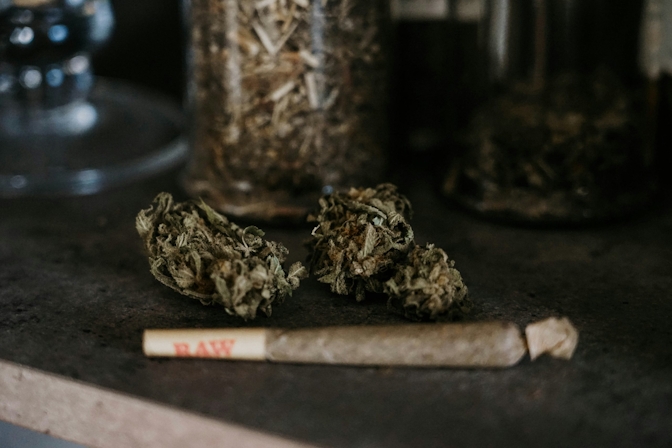
Elsa Olofsson / Unsplash
Yes, you can smoke cannabis from hermaphrodite plants, but we wouldn’t exactly recommend it. In all honesty, it’s just not enjoyable. Here’s why:
- Seeded buds: Hermie weed will likely contain seeds. Seeds can be removed during processing, but the overall quality will be lower than unpollinated female flowers.
- Lower potency: The plant has focused its energy on seeds produced rather than resin-rich buds.
- Reduced yield: The smokable yield decreases when you account for the weight of seeds and the difficulty in properly trimming seeded buds.
- Smoking quality: It’s not dangerous to consume, but smoking hermaphroditic cannabis will not provide that premium experience of smoking properly grown seedless (sinsemilla) buds.
Managing, Preventing & Removing Hermie Weed Plants
Managing
Found a hermaphrodite marijuana plant in your garden? Act fast. Here’s how to manage it:
- Isolate immediately: Move the hermie plant away from female plants if possible.
- Remove Bananas: If only a few bananas or pollen sacs have grown, you can carefully remove them with tweezers. Check back daily for new formations.
- Damage control: For plants showing multiple hermie sites, you might want to harvest early to save what you can before pollination starts.
- Water spray: Pollen becomes useless when wet. Spraying release sites with water can help minimize the pollen spread.
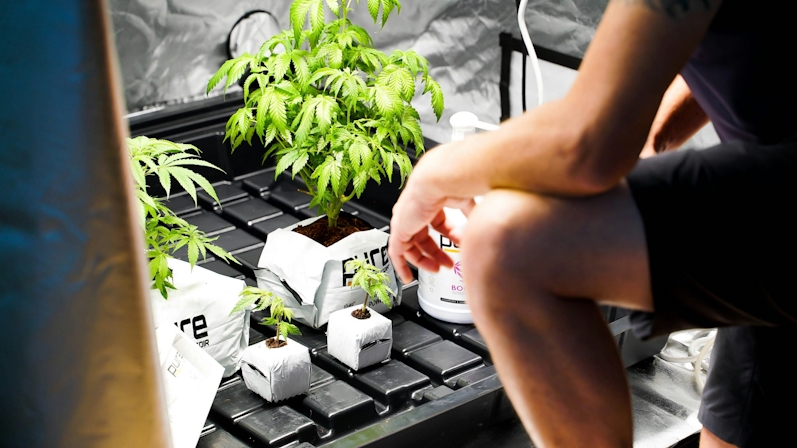
2H Media / Unsplash
Preventing
Prevention is always better than management:
1. Choose stable genetics: We always recommend getting feminized seeds from reputable breeders and seed banks. You’ll have the best shot at avoiding mid-quality cannabis seeds that could produce female and male plants (or worse, the rare hermie).
2. Maintain ideal growing conditions:
- Have consistent light schedules with no interruptions during dark periods
- Keep temperatures between 70-85°F (21-29°C) during light periods
- Prevent nutrient deficiencies and excessive feeding
- Avoid plant stress whenever possible
3. Proper grow room setup:
- Light-proof growing environment during dark periods
- Good air circulation
- Stable humidity levels
- Appropriate plant spacing
4. Timely harvesting: Don’t extend flowering beyond the recommended window for your strain.
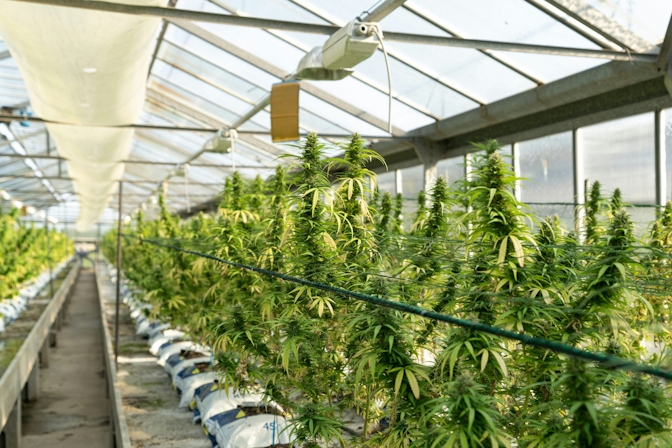
Crystalweed / Unsplash
Removing
When you’ve checked back regularly and you’re certain you’re growing a hermaphrodite plant, here’s how to remove it before pollinating other flowering plants to produce seeds:
- Completely remove the plant: Take it out of your grow room entirely and try not to shake off any loose pollen.
- Disposal protocol: Put the plant in a sealed bag before moving through your grow space to prevent accidental pollen spreading.
- Clean well: Change clothes and wash hands after handling hermaphroditic plants before heading back to your grow room.
- Inspect neighbors: Carefully check all plants that were near the hermie for signs of pollen or early seed development.
Final Thoughts
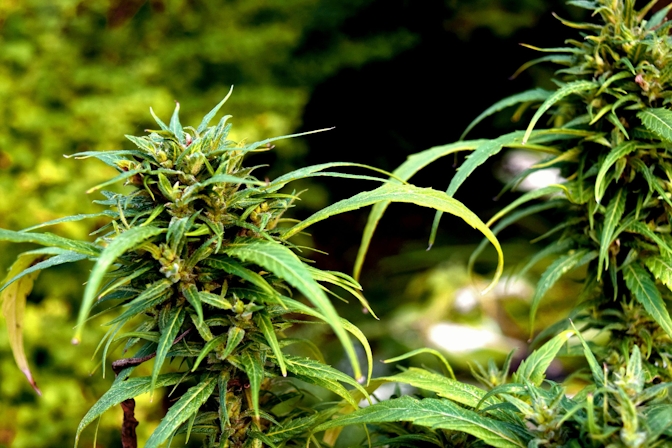
Sam Doucette / Unsplash
Growing cannabis isn’t always a walk in the park. When it comes to hermaphrodite cannabis plants, they run the risk of releasing pollen and fertilizing female reproductive organs on other plants nearby. With the guide above, you should have no problem preventing hermaphrodite cannabis plants and reaping the rewards of a bountiful, female-only harvest.
Herb Recommended Products:
READ MORE










